$550M project in KC is geared to save lives, homes. Did you even know it’s happening?
Uniquely KC is a Star series exploring what makes Kansas City special. From our award-winning barbecue to rich Midwestern history, we’re exploring why KC is the “Paris of the Plains.”
With torn up roads and ever-present jackhammers, Kansas City’s streetcar expansion on Main Street might be painfully obvious.
But before a single foot of rail steel was embedded there, an army of construction workers has — over the last 15 years — been working along the Missouri and Kansas rivers, hauling dirt and rock, pouring concrete and driving steel as part of a different construction project, one of the most vital in the Kansas City area. Most residents may not even know it is happening.
Costing more than $550 million, geared to save lives, homes and businesses, it’s now entering its final phase.
“That sound you’re hearing over there …” began Scott Mensing, 42. The program manager for the Kansas City district of the U.S. Army Corps of Engineers stood on the south side of the Kansas River in the Argentine area of Kansas City, Kansas. He pointed north across the water toward the distant and rhythmic sound of what seemed like a massive jackhammer.
“They’re pounding those H-piles into the ground”, Mensing said. “They’re 90-foot-long steel beams that the levee floodwall itself will be founded on.”
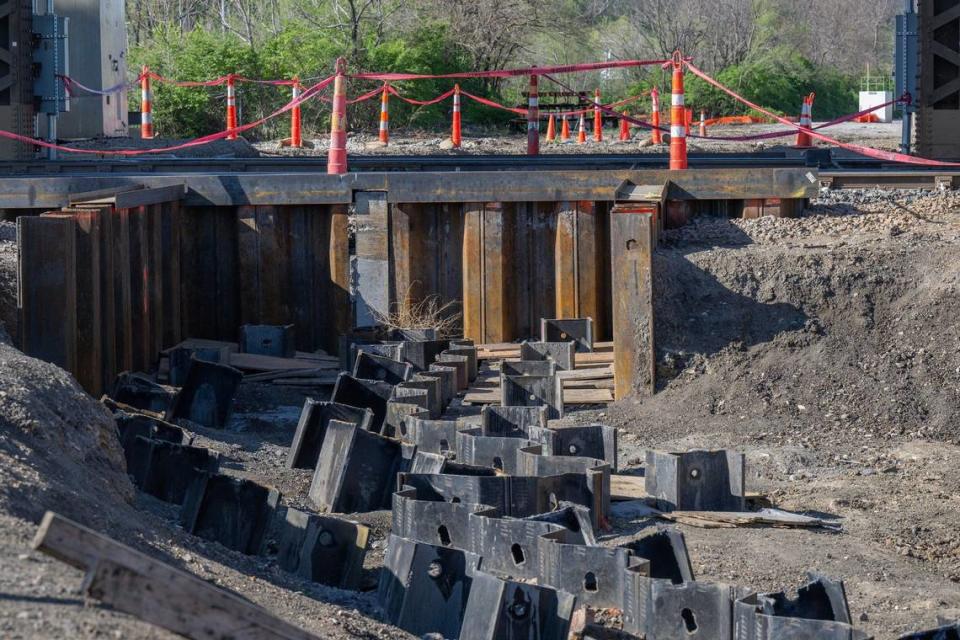
The project grew out of the $20 billion in devastation wrought by the Great Flood of 1993 — when nine central states including Kansas and Missouri became so swamped that some 50,000 homes were destroyed and cities evacuated. In one Missouri town, caskets literally swelled from the cemetery ground and were swept away.
The federal government created the Kansas Citys Levees Project. Its goal: to drastically reduce the odds of a similar cataclysm here.
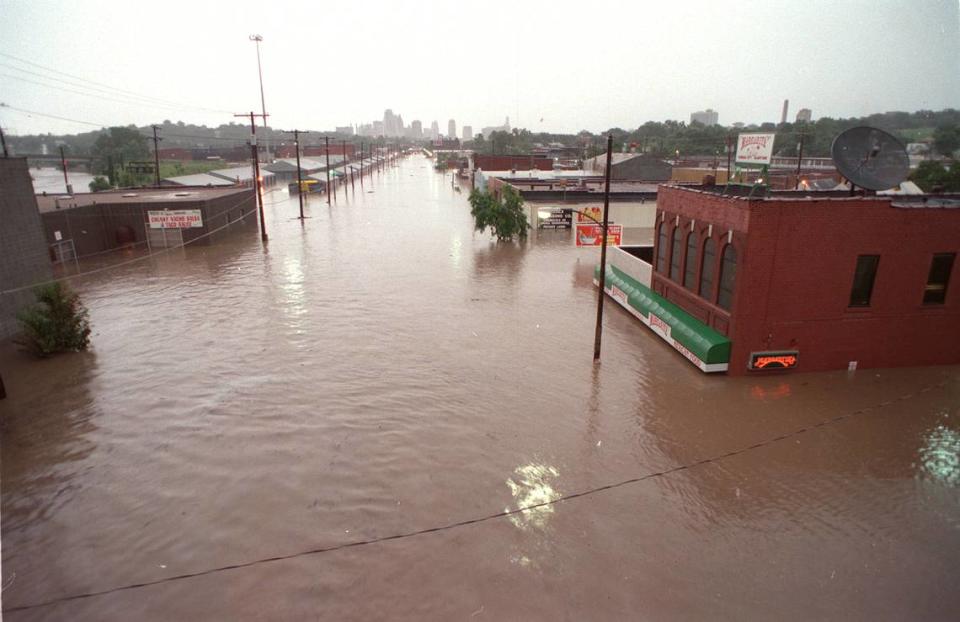
In 2009, the corps in partnership with the city of Kansas City, embarked on a $25 million project to strengthen existing levees and concrete floodwalls along the Missouri River in North Kansas City, the East Bottoms and Fairfax-Jersey Creek in KCK. They installed flood relief wells and improved pump stations.
Once finished with the Missouri portion in 2018, the corps then in cooperation with the Kaw Valley Drainage District and Unified Government of Wyandotte County and Kansas City, Kansas, began an even more extensive program: $529 million in federal money to improve levees and prevent flooding along the Kaw.
The Kansas side of the project to bolster the Argentine, Armourdale and Central Industrial District levees is scheduled to be finished by July 2026. Numbers given by the corps speak to its breadth.
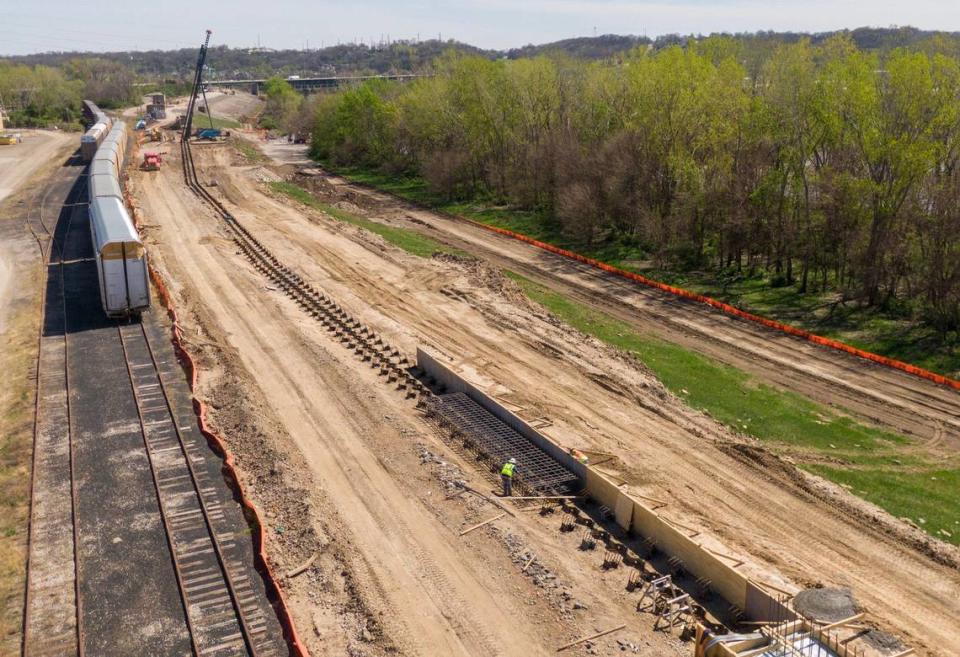
▪ 5: average height in feet the levees are raised, with some up to 7 feet taller.
▪ 13: number of pumping stations improved, which includes two newly built.
▪ 17: miles of levees and floodwalls improved.
▪ 24: miles of H-pile steel posts driven into the ground.
▪ 12,500: amount of concrete used as measured in full concrete trucks.
▪ 1.3 million: cubic yards of clay used to to raise the levees.
Combined, the projects along both rivers are estimate to protect some 7,000 buildings and 100,000 people on the safe side of 60 miles of levees and floodwalls.
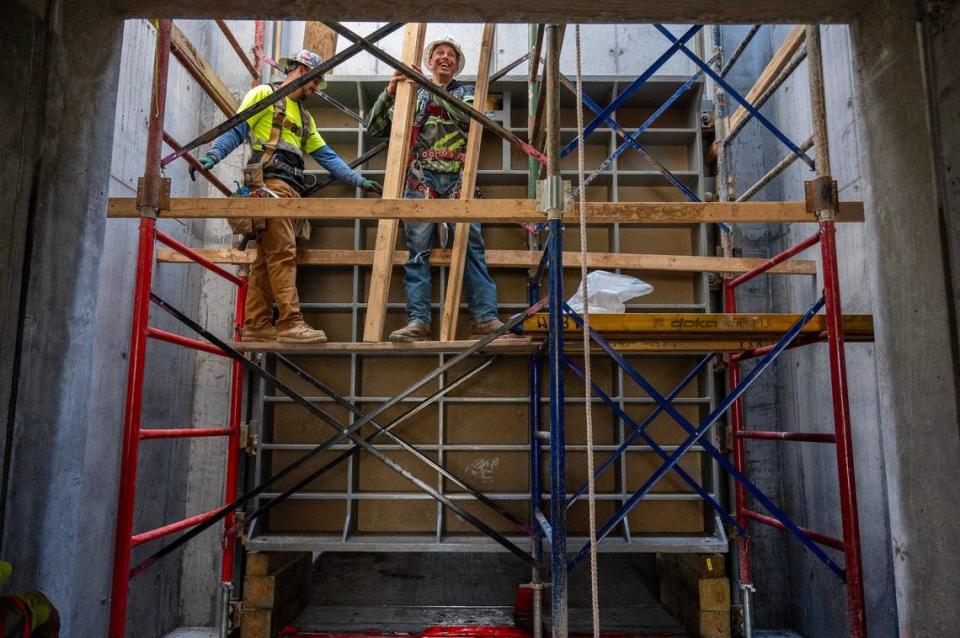
Although in 1993 the levees around Kansas City held, the flooding from May through September was devastating. Had the rivers actually overflowed the tops of the levees, it would have been more so. Mensing said that in 1993, water in some spots rose to within inches of overflowing.
“We recognize that this area has seen historic, devastating and catastrophic flooding over the last 100 to 150 years,” he said. “Within the Kansas River piece, there’s 30,000 people that live and work here. There’s $10 billion of infrastructure. Kansas City is one of the largest rail hubs in the nation. Hundreds of trains a day pass through here.
“If a flood were to occur in this area, it would be devastating to the country. It would have national impacts that would last for a long time. A flood here would be catastrophic.”
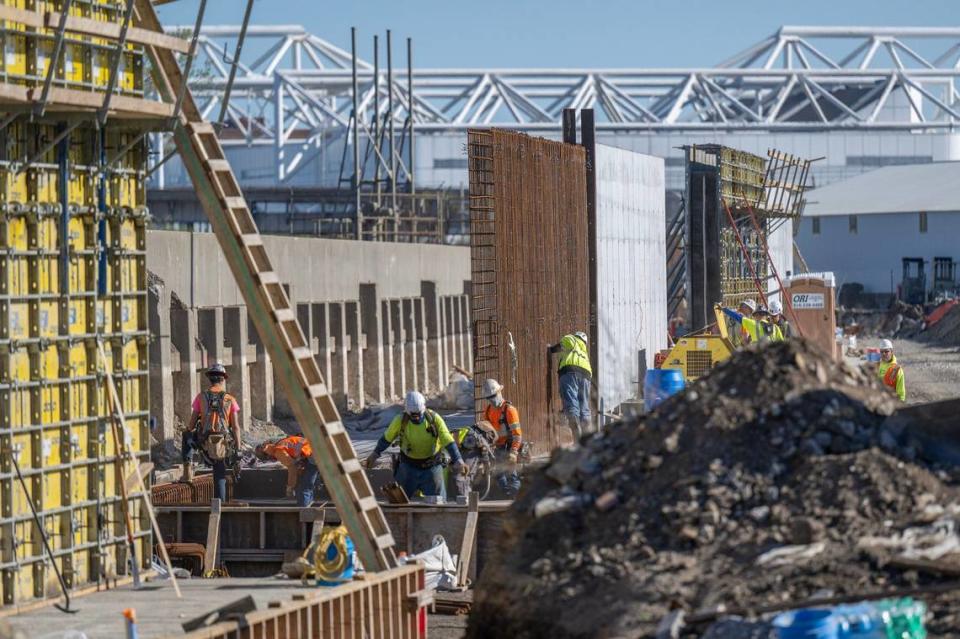
The corps estimates that the changes along the rivers will considerably decrease the likelihood of flooding. Whereas before, the Armourdale, Argentine and Central Industrial Districts had 0.3% chance of flooding each year, that will drop to 0.15% a year.
“It will be protecting us for a 500-year event. That means an event that’s expected only once in 500 years. I’m not going to be alive for it,” said Joe Roth, engineer for the Kaw Valley Drainage District, which operates and maintains the levees on the Kansas side.
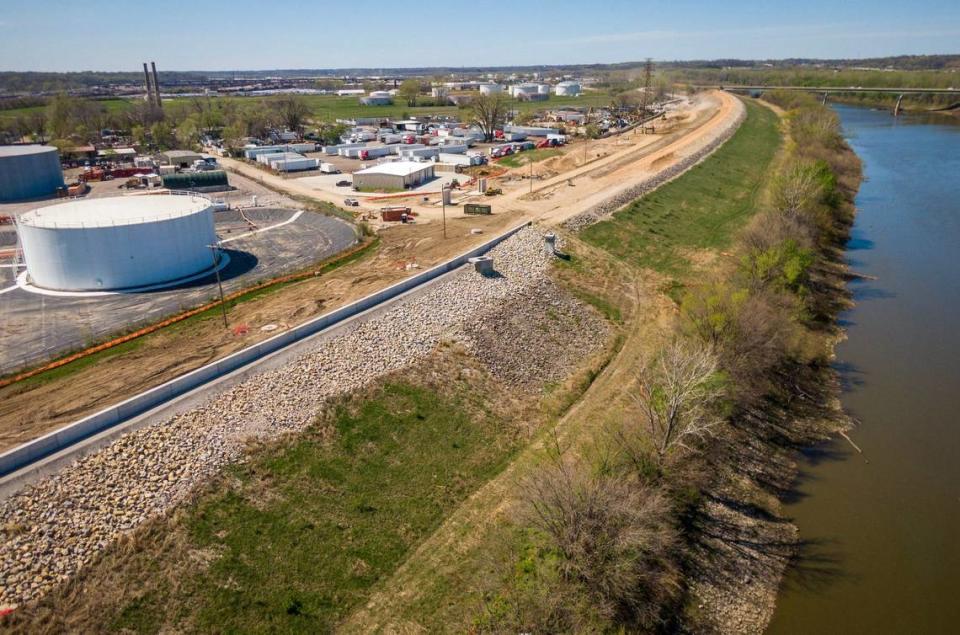
Among the numerous companies involved in the project are HNTB Corp., Michels Corp., Affinis engineering, Webuild Group, Lane Construction, Epic Concrete Construction, Terracon: Consulting Engineers and Scientists, Midland Surveying, Supplied Industrial Solutions, Strategic Value Solutions, RJH Consultants.
On a recent day, Mensing pointed out completed higher levees along the river in the West Bottoms, as well as new floodwall being erected near the Rock Island Bridge. The project there was one of 20 at various spots along the 17-mile stretch in a single day.
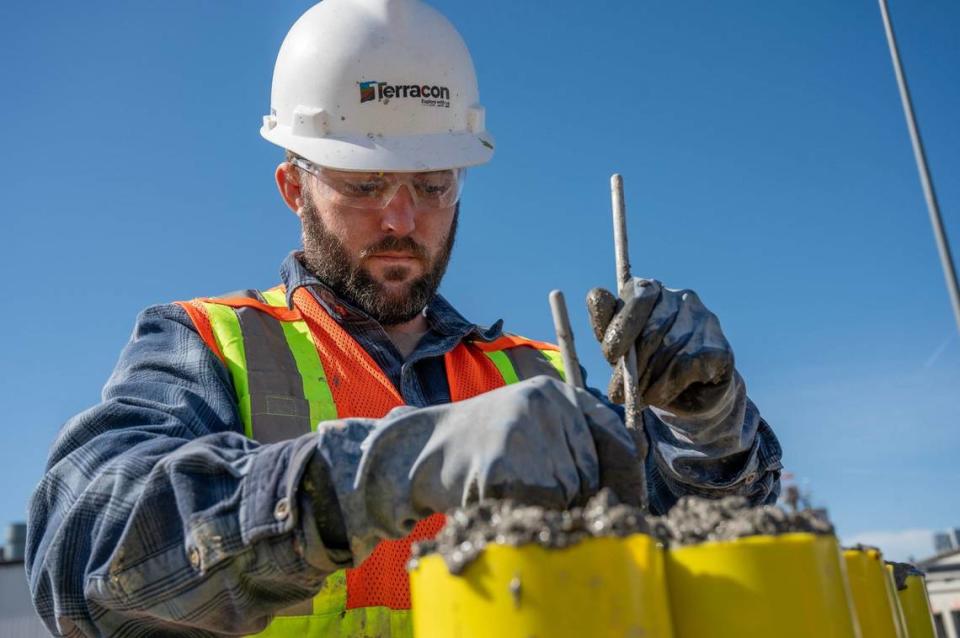
“One of my primary goals in this entire project was to minimize the impacts to the communities,” Mensing said. “Many of these property owners were here in ‘93. They’re like, ‘We remember sandbagging.’ Or they had family here in ‘51 when the existing levees over-topped and there was like 20 feet of water in Argentine.
“There’s a very historic and personal connection to flooding in this area. … We’re here to reduce that risk. We want to make sure the community is safer. I mean, the communities are definitely safer.”

